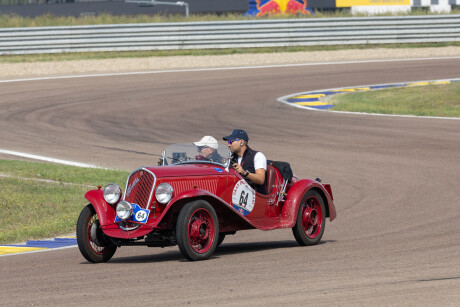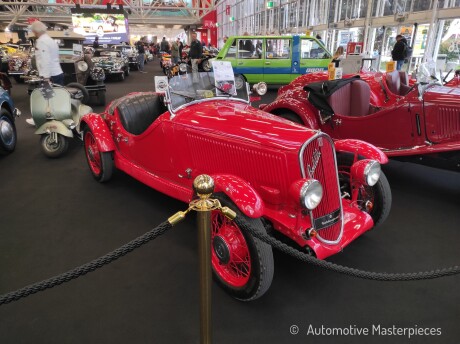
#CircuitoAutomobilisticoAgroPontino
The Circuito dell’Agro Pontino refers to a name used for automobile races held in and around the city of Latina (formerly Littoria), located in the Pontine Plain of southern Lazio. While the same designation was used in both the 1930s and the 1950s–60s, the races held under this name were quite different in scope, nature, and organization. The earliest known event dates back to May 5, 1937, shortly after the foundation of Littoria and during the Fascist regime’s reclamation and urbanization of the Agro Pontino. That first edition took place on a short urban circuit, laid out through the wide and geometric avenues of the newly built city. It was a relatively official event, likely promoted for its symbolic and political value as well as for sporting interest. The race featured a select field of touring and sports cars, possibly including professional or semi-professional drivers, and was designed as much to showcase the modern infrastructure of the regime’s model city as to promote motorsport. Its length was modest, estimated at around 2 to 3 kilometers, with narrow corners and limited safety features, in line with typical city circuits of the era. In contrast, the postwar editions of the Circuito dell’Agro Pontino—held primarily during the 1950s and 1960s—represented an entirely different chapter. These events were organized at a regional or interprovincial level, often with the support of local automobile clubs, and had a distinctly grassroots character. The circuits used were often longer and partially extended into rural surroundings, possibly incorporating only segments of the original urban layout, if at all. These races featured a wide range of vehicles, including Fiat-based specials, Osca barchettas, Alfa Romeo Giuliettas, and numerous light sport prototypes and touring cars, typically entered by privateers, local tuners, and emerging talents rather than by factory teams. While the name of the circuit remained constant, the philosophy, audience, and technical profile of the event had shifted dramatically. The 1937 race was a product of Fascist-era showmanship and urban promotion, while the postwar races reflected the democratization of motorsport in Italy—more accessible, informal, and animated by regional enthusiasm rather than political symbolism. No direct continuity is documented between the two periods; instead, the use of the same name seems to reflect a revival of local racing tradition in a region that had, by then, become fully integrated into the national road network. Today, both incarnations of the Agro Pontino Circuit—though rarely remembered—illustrate two distinct faces of Italian motorsport: one tied to the regime and modernist ambition of the 1930s, the other to the dynamic, decentralized spirit of the postwar racing boom.
We'll tell the story of this event on the occasion of its anniversary or when it will reach a sufficient number of cars.
If you would like to share your knowledge and archive, click on the banner JOIN THE LAB - HELP US TO IMPROVE & COMPLETE THE INFORMATION.
The census of all the cars related to this topic is in progress.
CARS (2)

1935 Fiat 508 S Balilla Sport
- Coachbuilder: Fiat
- Chassis n°: 508S083476
- Engine n°: 108CS000929
Private collection

1935 Fiat 508 S Balilla Sport
- Coachbuilder: Carrozzerie Speciali Fiat
- Chassis n°: 508S*071685*
- Engine n°: 108CS-000293
Private collection